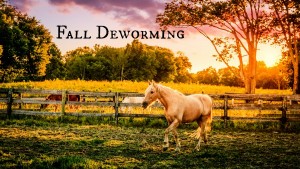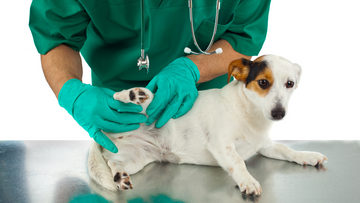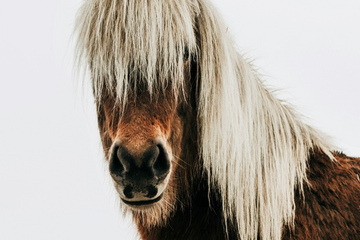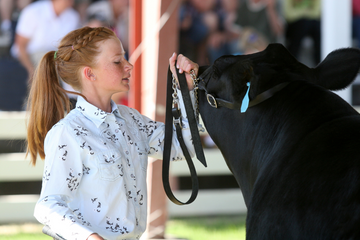 Fall is here! It is a beautiful time of year with all the changing leaves and cool weather. One thing that also changes is the parasite activity. Depending on where you are located in North America, you must find a parasite control system that is designed for your whereabouts. Strongyles parasites are most affected by seasonal changes and are extremely active during the fall.
For regions that are located north of the Ohio River, there are high pasture contamination with infective larval strongyles. This larvae accumulates after mid-summer and survive through the winter into the spring. These strongyles can affect your horses if they are pastured during this time.
To prevent fall larval buildup, worm your horses ASAP and move them to the cleanest pastures available. Clean pastures are hay fields, cattle pastures, or horse pastures that have been vacant since early summer.
For regions below the Ohio River, the hot summer temperatures suppress the larval increase. However, the moderate temperatures in the fall signal the return of all successful strongyle eggs into infective larvae in pastures.
To prevent larval buildup in the south, horses should be wormed no later than October. Horses should continue to be wormed based on egg reappearance periods.
Fall deworming is extremely important to horses all over the country. Be sure to follow the proper deworming routine based on your location and stay on it!
For more information of fall deworming, visit: http://www.thehorse.com/articles/13258/fall-deworming
Fall is here! It is a beautiful time of year with all the changing leaves and cool weather. One thing that also changes is the parasite activity. Depending on where you are located in North America, you must find a parasite control system that is designed for your whereabouts. Strongyles parasites are most affected by seasonal changes and are extremely active during the fall.
For regions that are located north of the Ohio River, there are high pasture contamination with infective larval strongyles. This larvae accumulates after mid-summer and survive through the winter into the spring. These strongyles can affect your horses if they are pastured during this time.
To prevent fall larval buildup, worm your horses ASAP and move them to the cleanest pastures available. Clean pastures are hay fields, cattle pastures, or horse pastures that have been vacant since early summer.
For regions below the Ohio River, the hot summer temperatures suppress the larval increase. However, the moderate temperatures in the fall signal the return of all successful strongyle eggs into infective larvae in pastures.
To prevent larval buildup in the south, horses should be wormed no later than October. Horses should continue to be wormed based on egg reappearance periods.
Fall deworming is extremely important to horses all over the country. Be sure to follow the proper deworming routine based on your location and stay on it!
For more information of fall deworming, visit: http://www.thehorse.com/articles/13258/fall-deworming
Blog
Fall Deworming

 Fall is here! It is a beautiful time of year with all the changing leaves and cool weather. One thing that also changes is the parasite activity. Depending on where you are located in North America, you must find a parasite control system that is designed for your whereabouts. Strongyles parasites are most affected by seasonal changes and are extremely active during the fall.
For regions that are located north of the Ohio River, there are high pasture contamination with infective larval strongyles. This larvae accumulates after mid-summer and survive through the winter into the spring. These strongyles can affect your horses if they are pastured during this time.
To prevent fall larval buildup, worm your horses ASAP and move them to the cleanest pastures available. Clean pastures are hay fields, cattle pastures, or horse pastures that have been vacant since early summer.
For regions below the Ohio River, the hot summer temperatures suppress the larval increase. However, the moderate temperatures in the fall signal the return of all successful strongyle eggs into infective larvae in pastures.
To prevent larval buildup in the south, horses should be wormed no later than October. Horses should continue to be wormed based on egg reappearance periods.
Fall deworming is extremely important to horses all over the country. Be sure to follow the proper deworming routine based on your location and stay on it!
For more information of fall deworming, visit: http://www.thehorse.com/articles/13258/fall-deworming
Fall is here! It is a beautiful time of year with all the changing leaves and cool weather. One thing that also changes is the parasite activity. Depending on where you are located in North America, you must find a parasite control system that is designed for your whereabouts. Strongyles parasites are most affected by seasonal changes and are extremely active during the fall.
For regions that are located north of the Ohio River, there are high pasture contamination with infective larval strongyles. This larvae accumulates after mid-summer and survive through the winter into the spring. These strongyles can affect your horses if they are pastured during this time.
To prevent fall larval buildup, worm your horses ASAP and move them to the cleanest pastures available. Clean pastures are hay fields, cattle pastures, or horse pastures that have been vacant since early summer.
For regions below the Ohio River, the hot summer temperatures suppress the larval increase. However, the moderate temperatures in the fall signal the return of all successful strongyle eggs into infective larvae in pastures.
To prevent larval buildup in the south, horses should be wormed no later than October. Horses should continue to be wormed based on egg reappearance periods.
Fall deworming is extremely important to horses all over the country. Be sure to follow the proper deworming routine based on your location and stay on it!
For more information of fall deworming, visit: http://www.thehorse.com/articles/13258/fall-deworming





















